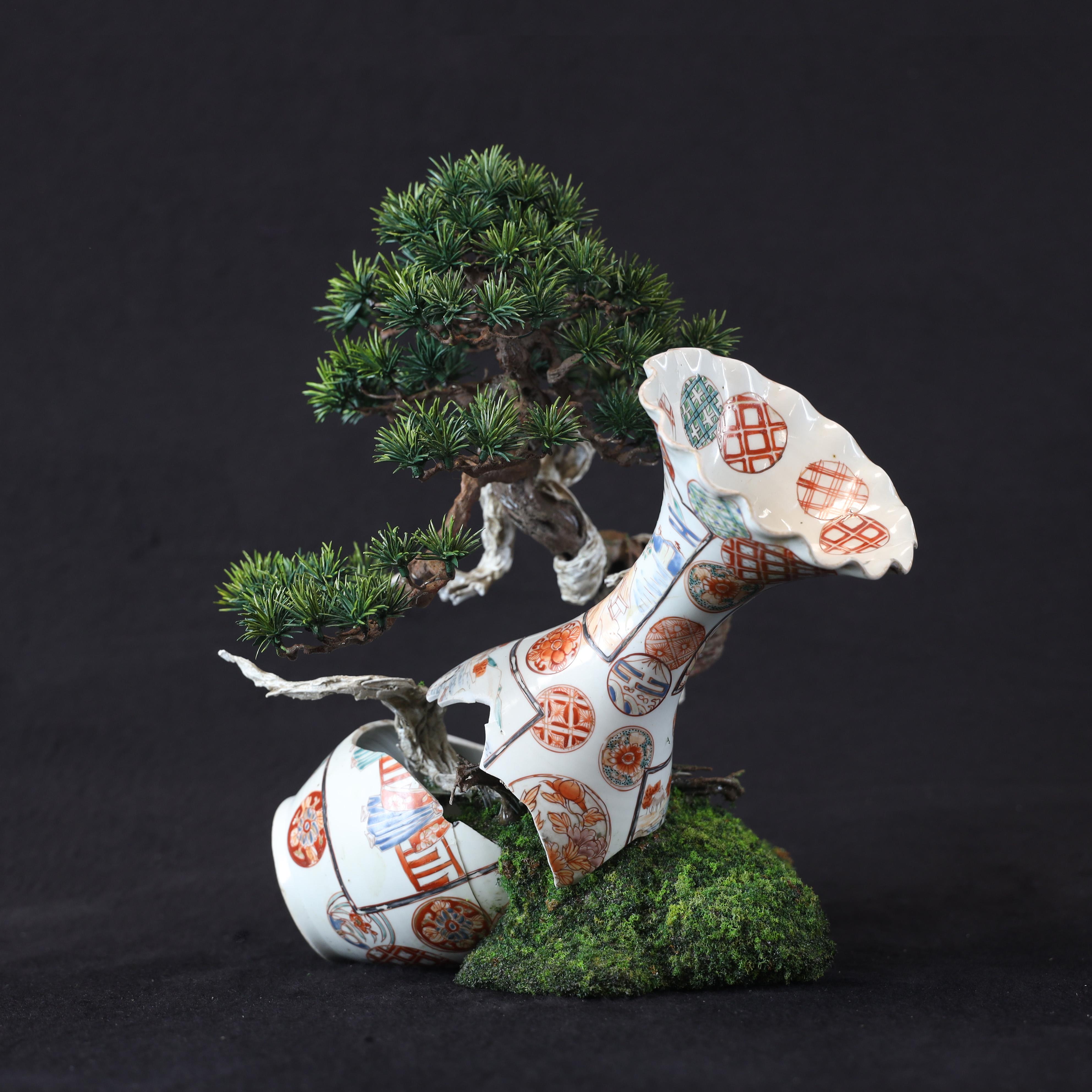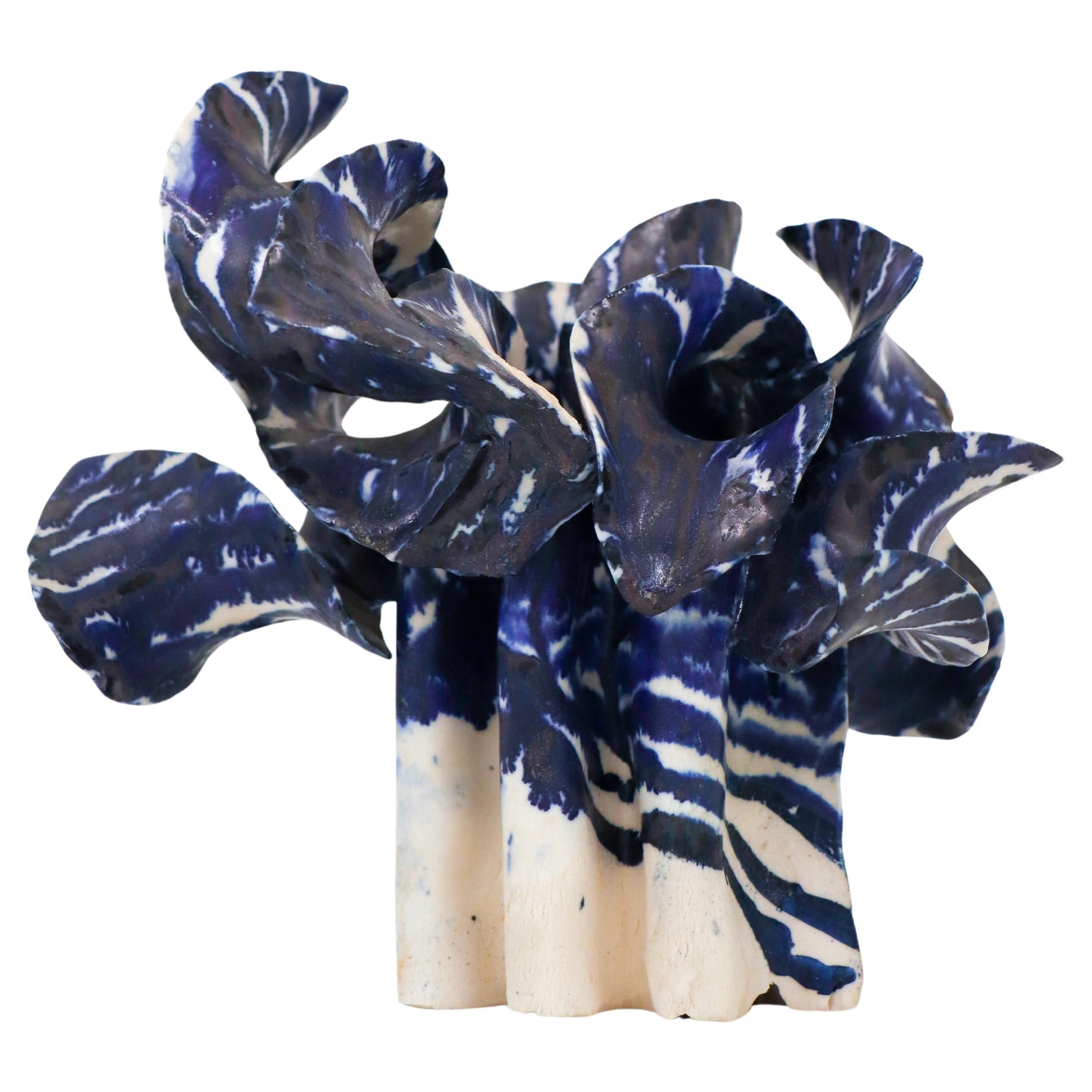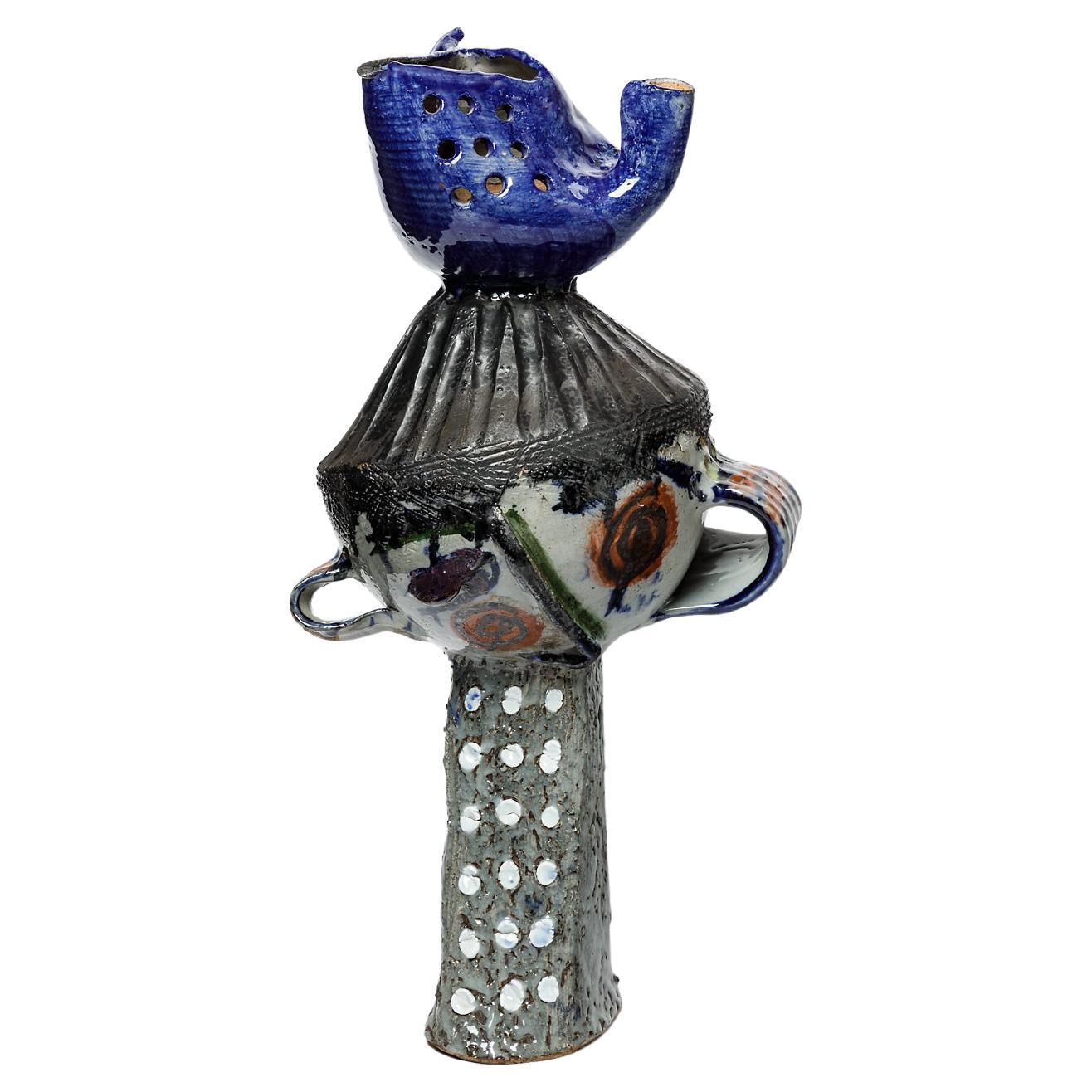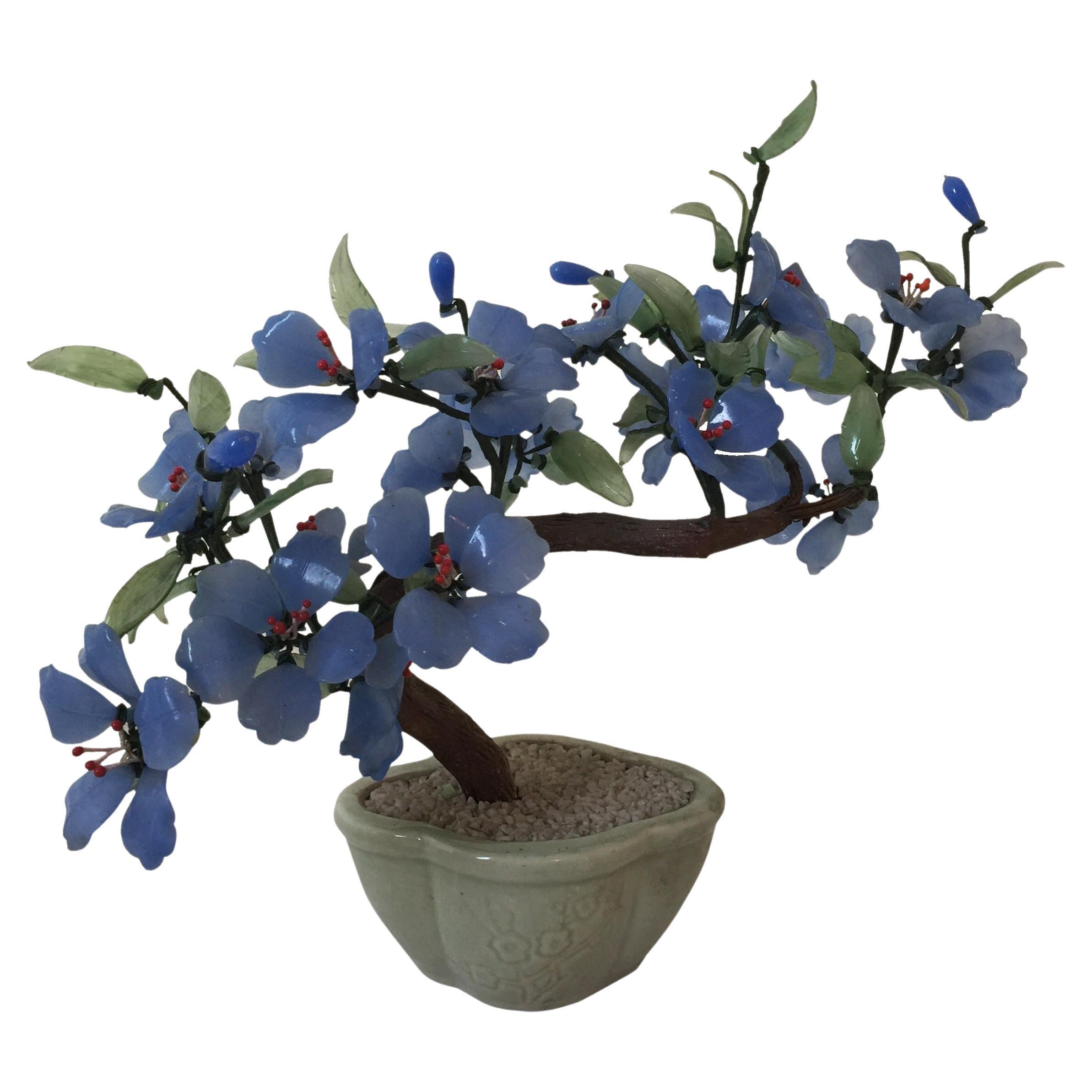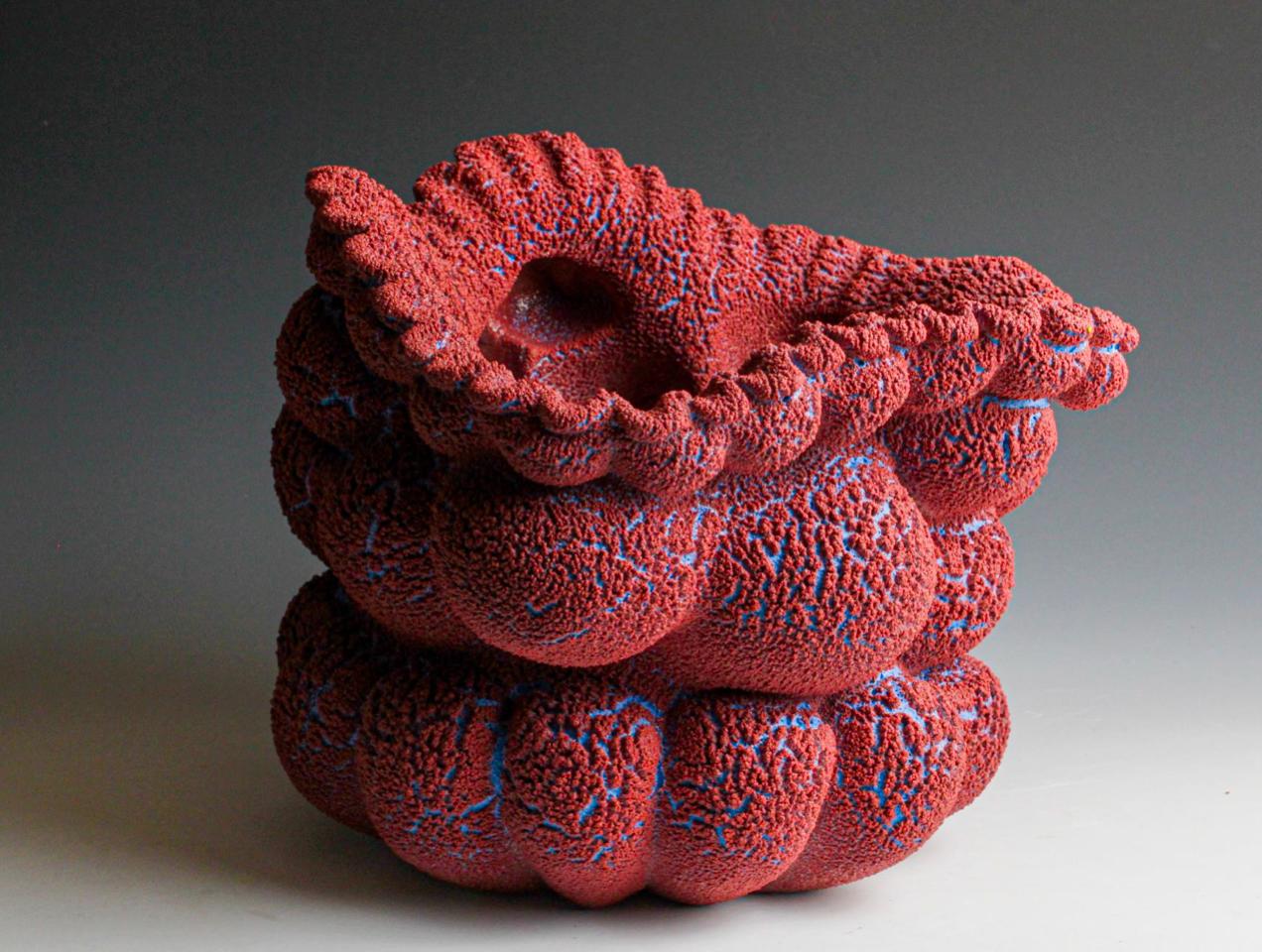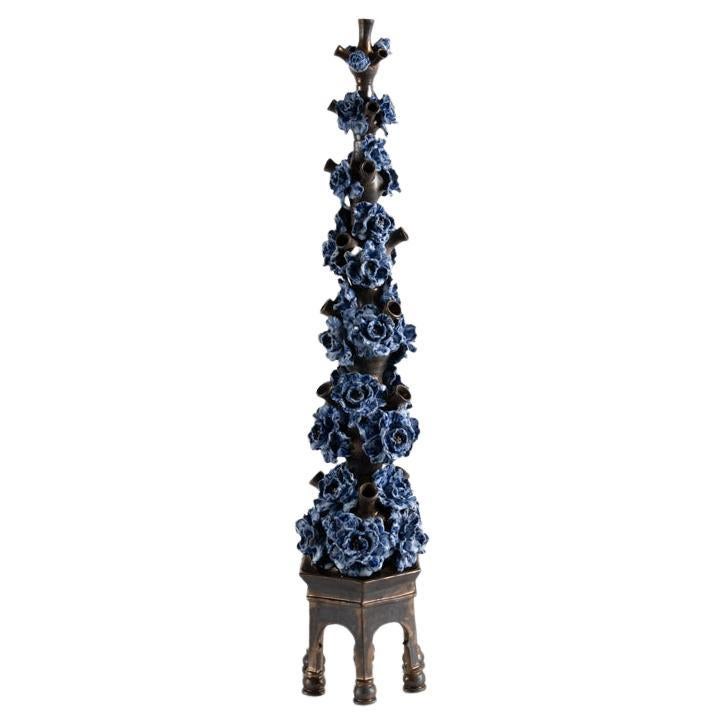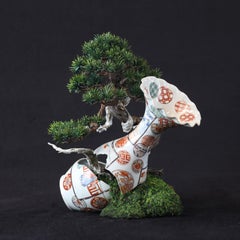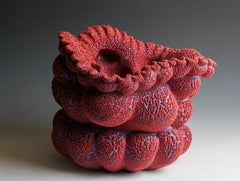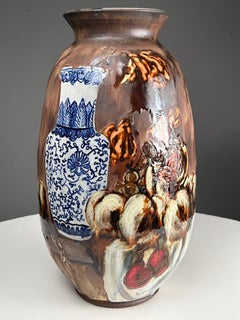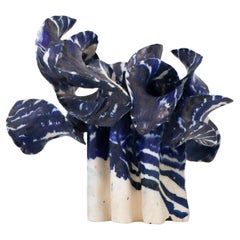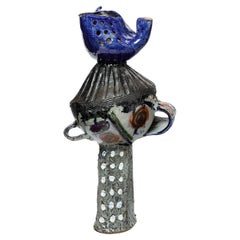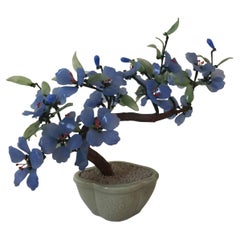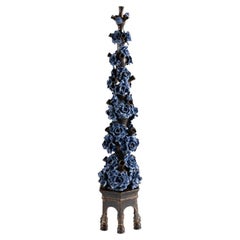Items Similar to Red Pine Blues, Patrick Bergsma, Delftware, Bonzai Trees, Ceramic Sculpture
Video Loading
Want more images or videos?
Request additional images or videos from the seller
1 of 10
Patrick BergsmaRed Pine Blues, Patrick Bergsma, Delftware, Bonzai Trees, Ceramic Sculpture2024
2024
$12,500
£9,433.41
€10,799.82
CA$17,629.14
A$19,354.60
CHF 10,097.34
MX$234,217.63
NOK 126,554.45
SEK 119,247.56
DKK 80,617.80
About the Item
Patrick Bergsma (b. 1965) is a Dutch sculptor and ceramicist currently working in Heerhugowaard, Netherlands, known for constructing verdant growth emerging from antique pottery. The son of antique shop owners and grandson of an avid porcelain collector, Bergsma expresses the life and culture embedded into the valuable artifact, both demolished and held strong by his sculpted floral growth.
“What we call typically Dutch like Delft blue was originally an attempt to imitate the very popular porcelain imported from China and Japan. In this series I often use these 17th century “imitations”, combined with the natural elements like bonsai and ikebana. In Japan there is a tradition to repair broken porcelain with golden glue called “kintsugi.” According to the philosophy it treats breakage and repair as part of the history of an object, rather than something to disguise. In these works, it is as if the natural elements reshape these old cultural remains from our civilization.” -Artist Statement
Red Pine Blues, Patrick Bergsma, Delftware, Bonzai Trees, Ceramic Sculpture
- Creator:Patrick Bergsma (Dutch)
- Creation Year:2024
- Dimensions:Height: 31.5 in (80.01 cm)Width: 26 in (66.04 cm)Depth: 26 in (66.04 cm)
- Medium:
- Movement & Style:
- Period:
- Condition:
- Gallery Location:St. Louis, MO
- Reference Number:1stDibs: LU97215864022
About the Seller
5.0
Gold Seller
Premium sellers maintaining a 4.3+ rating and 24-hour response times
Established in 1994
1stDibs seller since 2015
160 sales on 1stDibs
Typical response time: <1 hour
- ShippingRetrieving quote...Shipping from: St. Louis, MO
- Return Policy
Authenticity Guarantee
In the unlikely event there’s an issue with an item’s authenticity, contact us within 1 year for a full refund. DetailsMoney-Back Guarantee
If your item is not as described, is damaged in transit, or does not arrive, contact us within 7 days for a full refund. Details24-Hour Cancellation
You have a 24-hour grace period in which to reconsider your purchase, with no questions asked.Vetted Professional Sellers
Our world-class sellers must adhere to strict standards for service and quality, maintaining the integrity of our listings.Price-Match Guarantee
If you find that a seller listed the same item for a lower price elsewhere, we’ll match it.Trusted Global Delivery
Our best-in-class carrier network provides specialized shipping options worldwide, including custom delivery.More From This Seller
View All"Shohin", Contemporary, Mixed Media, Ceramic, Sculpture, Hand Painted, Bonzai
Located in St. Louis, MO
Patrick Bergsma (b. 1965) is a Dutch sculptor and ceramicist currently working in Heerhugowaard, Netherlands, known for constructing verdant growth emerging from antique pottery. The...
Category
2010s Contemporary Sculptures
Materials
Ceramic, Plastic, Mixed Media
Abstract Contemporary Ceramic Sculpture, Glazed Stoneware Vessel, Red and Blue
By Maxwell Mustardo
Located in St. Louis, MO
Abstract Contemporary Ceramic Sculpture, Glazed Stoneware Vessel, Red and Blue
Maxwell Mustardo is a ceramic artist whose highly textured forms are the result of meticulous research...
Category
2010s Contemporary Abstract Sculptures
Materials
Ceramic, Stoneware, Pigment, Glaze
"Vanitas Vase #11", Ceramic Sculpture with Still Life Painting in Glaze
Located in St. Louis, MO
Dirk Staschke is best known for his exploration of Dutch Vanitas still life themes in the medium of ceramics. His current body of work explores the space in between sculpture and pai...
Category
2010s Contemporary Sculptures
Materials
Ceramic, Glaze
Contemporary Ceramic Sculpture, Colorful, Glazed Stoneware, Maxwell Mustardo
By Maxwell Mustardo
Located in St. Louis, MO
Contemporary Ceramic Sculpture, Colorful, Glazed Stoneware, Maxwell Mustardo
Maxwell Mustardo is a ceramic artist whose highly textured forms are the result of meticulous research i...
Category
2010s Contemporary Abstract Sculptures
Materials
Ceramic, Stoneware, Glaze
Wall Mounting, Contemporary Ceramic Sculpture, Animal, Elegant Figurative Design
By Lindsay Pichaske
Located in St. Louis, MO
Wall Mounting, Contemporary Ceramic Sculpture, Animal, Elegant Figurative Design
Since graduating from the University of Colorado in 2010, Pich...
Category
2010s Contemporary Figurative Sculptures
Materials
Ceramic, Earthenware, Paint, Underglaze
"Burst and Bloom", Contemporary, Abstract, Ceramic, Sculpture, Biomorphic, Glaze
Located in St. Louis, MO
“My work reflects on experiences of transformation, alchemy and the sublime, manifesting in sculptures that undulate between soft and hard, alive and static, real and imagined. These...
Category
2010s Contemporary Abstract Sculptures
Materials
Ceramic, Porcelain, Glaze, Mixed Media
You May Also Like
Unique Ceramic - Abstract Blue Sculpture by Britt-Ingrid Persson Sweden
By Britt-Ingrid Persson
Located in Stockholm, SE
A lovely abstract ceramic sculpture made by Britt-Ingrid Persson at her own studio in Sweden in the 1970s. The sculpture is unsigned but there is no doubt that this one is made by Br...
Category
Late 20th Century Swedish Scandinavian Modern Wall-mounted Sculptures
Materials
Ceramic
Large Abstract Blue and Red Stoneware Ceramic Sculpture by Michel Lanos
By Michel Lanos
Located in Neuilly-en- sancerre, FR
Michel Lanos (1926-2005)
Large abstract stoneware ceramic sculpture by french artist
Signed under the base
Blue, red and black ceramic glazes colors
Painted ceramic 20th...
Category
20th Century French Mid-Century Modern Abstract Sculptures
Materials
Ceramic
Bonsai Blue 1980, Glass and Ceramic
Located in Ciudad Autónoma Buenos Aires, C
We have specialized in the sale of Art Deco and Art Nouveau and Vintage styles since 1982. If you have any questions we are at your disposal.
Pushing the button that reads 'View All From Seller'. And you can see more objects to the style for sale.
Why are there so many antiques in Argentina?
In the 1880 – 1940 there was a grate wave of immigration encouraged by the periods of war that were taking place.
1st World War took place between 1914 and 1918
2nd World War took place between 1939 and 1945
The immigrants options were New York or Buenos Aires. Tickets were cheap and in Buenos Aires they were welcomed with open arms, as it was a country where everything was still to be done.
Argentina was the country of new opportunities, labour was needed and religious freedom was assured, in many cases the of the family travel first until they were settled and then the rest of the family members join them.
In the immigrant museum “Ellis Island Immigrant Building” in New York you can se the promotional posters of the boats that would take them to a new life.
Between the years 1895 and 1896, Argentina had the highest DGP (gross domestic product) per capita in the world according to the Maddison Historical Statistics index, this situation arose due to the large amount of food being exported to European countries, which were at war.
The Argentinean ships left the port of Buenos Aires with food, but they returned with furniture, clothes and construction elements, (it´s common to see this the old buildings of the historic neighbourhood of San Telmo, the beams with the inscription “Made in England)”, as well as many markets that were built in Buenos Aires, such us the San Telmo Market, whose structure was brought by ship and afterwards assembled in 900 Defensa Street.
With the great influence of European immigrants living in the country, the children of the upper classes travelled to study in France, resulting in the inauguration of “La Maison Argentinienne”, on 27th of June 1928, in the international city of Paris, which hosted many Argentinians that were studying in Frace.
It´s the fourth house to be built after France, Canada and Belgium, being the first Spanish-speaking one. Still in place today (17 Bd Jourdan, 75014, Paris, France). Many of the children of these wealthy families who attended international art exhibitions, museums and art courses abroad, took a keen interest in the European style. This is why Buenos Aires was at the time referred as “The Paris of South America”.
Between the years 1890 and 1920 more than a hundred Palaces were built on Alvear Avenue the most exclusive avenue in Buenos Aires. Today some of these palaces have been transformed into museums, hotels and embassies.
In the year 1936, the Kavanagh building was inaugurated, it was the tallest reinforced concrete building in South America.
During 1994 the American Society of Civil Engineers distinguished it as an “international engineering milestone”, and it´s now considered a World Heritage of Modern Architecture.
At the time was common to hire foreign architects such as Le Corbusier, who visited Buenos Aires/Argentina in 1929 and in 1948 he drew up the blueprints for a house built in La Plata City (which was declared a World Heritage Site).
In 1947, the Hungarian architect Marcelo Breuer designed “Parador Ariston” in the seaside city of Mar del Plata. After an Argentinean student at Harvard University convinced him to come to Argentina. He worked on an urban development project in the Casa Amarilla, area of La Boca.
The Ukrainian architect, Vladimiro Acosta, arrives in Argentina in 1928 and worked as an architect until que moved to Brazil.
Antonio Bonet, a Spanish architect who worked with Le Corbusier in Paris, arrives in Argentina in 1937, where he carried out several architectural works and in 1938 designs the well-known BFK chair.
Andres Kálnay, of Hungarian origin, made around 120 architectural masterpieces, among which the former Munich brewery stands out, he even made the furniture’s design.
The German architect, Walter Gropius, director of the Bauhaus, lived in Argentina, where he wrote articles for “Sur” magazine and founded in Buenos Aires, an architectural firm with Franz Möller, who was also an architect, where he built two houses.
At the same time several famous designers decided to immigrate to Argentina, among them we can find the well-known French designer, Jean-Michel Frank, who arrived in the country in 1940 and also worked for the Rockefeller family.
Special pieces were made, which were sold exclusively in the country, such as the well-known German company “WMF”, who sold their products by catalogue, which were chosen by the ladies of High Society in the list of wedding gifts, as well as the pieces designed by Christofle.
The Swiss sculptor Alberto Giacometti, made special pieces for Argentinean mansions.
In 1904 the first Jansen branch outside Paris was established in Buenos Aires, as the Argentinean clientele demanded a large amount of furniture, from the end of the 19th Century to the mid-20th Century.
In 1970, the brand Rigolleau Argentina made pieces authorised by Lalique.
The brands Maple and Thompson also set up shop in the country.
The French plastic artist, Marcel Duchamp moved to Argentina in 1918-1919.
Glass signed Gallé, Charder, Leverre, Schneider, Muller and other French firms. They were bought in flower shops and were given to ladies with beautiful floral arrangements.
Some furniture manufacturers travelled to international fairs and bough the patterns to produce the furniture in Argentina, such as the furniture firm Englander and Bonta, who bought the patterns ins Italy.
It is worth mentioning that in Argentina we have the largest Community of Italians outside...
Category
Vintage 1980s Japanese Mid-Century Modern Planters, Cachepots and Jardin...
Materials
Art Glass, Ceramic
Matthew Soloman, Tulipiere in a Metalic and Blue Glaze, United States
By Matthew Solomon
Located in New York, NY
Using fine ceramics fired in a variety of glazes (all of which he crafts himself) Matthew Solomon creates sculptures of beauty, with an element of the unexpected. Repetition of form ...
Category
2010s American Abstract Sculptures
Materials
Ceramic
blue and red abstract Ceramic sculpture Vase by Klaus Schultz, Germany
By Klaus Schultz
Located in Neuilly-en- sancerre, FR
A rare ceramic vase by Klaus Schultz.
Unreadable glaze signature under the base,
circa 1960-1970.
Category
20th Century French Beaux Arts Vases
Materials
Ceramic
Sculpture Bloomen 12 by Zanellazine Ceramics
Located in Geneve, CH
Sculpture Bloomen 12 by Zanellazine Ceramics
Dimensions: W 11 x H 60 cm
Materials: Red clay, Orange and tobacco semi-refractorie clay, White fireclay.
About:
Giovanna Zighetti, cera...
Category
2010s Italian Post-Modern Figurative Sculptures
Materials
Ceramic
$2,649 / item
